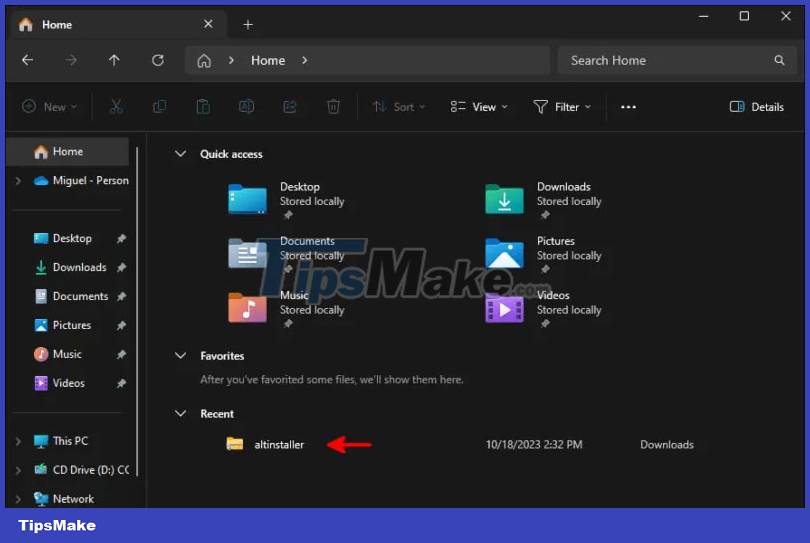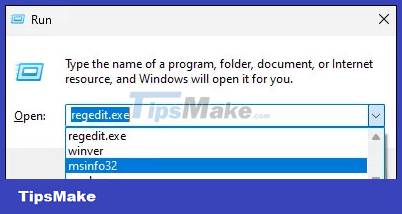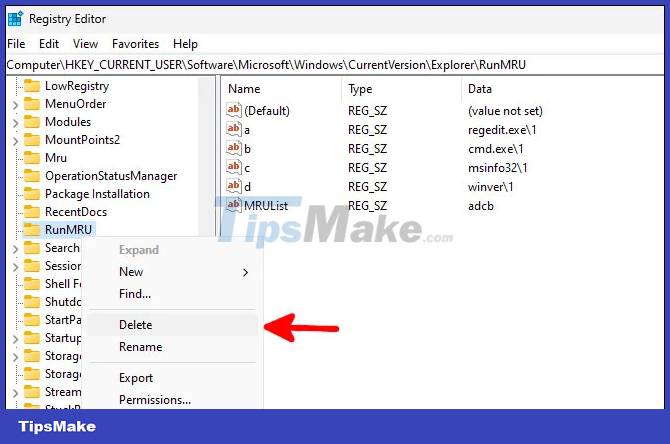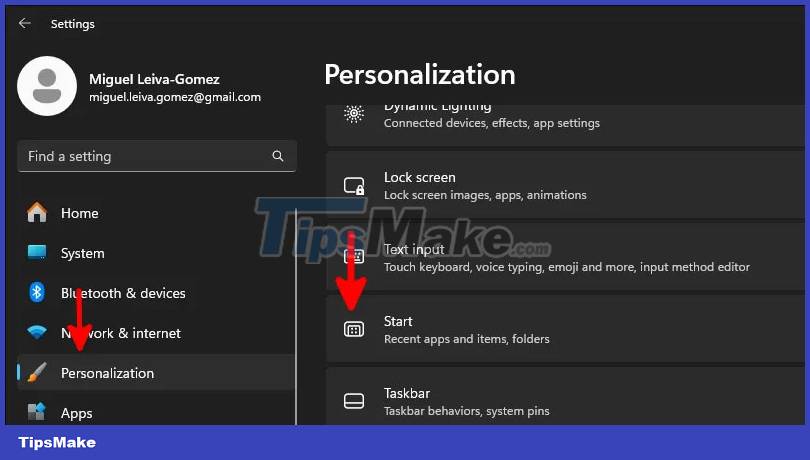3 ways to delete recent files and folders in Windows
However, these features also cause serious headaches for people who value privacy. If you really want to delete all your recent file history in Windows, this guide will provide some options!
Delete recent files from File Explorer
File Explorer is the hub for everything you've accessed. If you want to delete all your recent files from Windows, this is probably where you should start.
Your history will appear in the left panel and on the Home screen , below the Quick access section .

If you just want to remove one item, right-click it, then tap Remove from Recent . But maybe you're here to permanently erase your history.
If that's the case, click the three dots near the top of the file list, then click Options .

Inside the Windows Explorer options dialog box on the General tab , uncheck all the options near the bottom in the Privacy section , then click the Clear button next to Clear File Explorer history .

Click OK and watch your history disappear in real time!
Delete history from Registry
Besides File Explorer's Recent list , your registry also stores keys containing a history of what you've typed into its URL bar, as well as all the commands you've run outside of the Run window ( Win + R ).

To access the Registry, go to the Start menu, type regedit , then press Enter .
Navigate to:
HKEY_CURRENT_USERSoftwareMicrosoftWindowsCurrentVersionExplorerIn the registry Explorer section , find the key with the folder icon named RunMRU . Right click on it and delete.

This will immediately delete all of your command history.
To delete your path history in File Explorer, scroll down to TypedPaths and delete that path history just like you deleted RunMRU .
If you want to introduce some automation in this process, create a new text file, open it in Notepad and add the following content to it:
To clear your command history:
reg delete HKCUSOFTWAREMicrosoftWindowsCurrentVersionExplorerRunMRU /F 2>nulTo clear your path history in File Explorer:
reg delete HKCUSOFTWAREMicrosoftWindowsCurrentVersionExplorerTypedPaths /F 2>nulOnce you've added the lines you want to add to your batch file, save it as deletehistory.bat or whatever you want to call it, and make sure All files is selected under Save as type .

Once saved, just double-click the file and let it activate. It will open a command window and quickly disappear after it finishes deleting your history entries.
If you want this batch file to run every time you start the system, open the Run window and run shell:startup. This will take you to the folder containing all the scripts and utilities you run on startup. Drag your newly created batch file there and enjoy automatic history clearing every time you log in to Windows!
If you want to clear your history on demand, you will need to access the batch file and run it manually. For your convenience, you may want to make a copy of it somewhere more accessible than the startup folder.
Disable jump list from Settings
In addition to the histories stored in the Registry and file management utilities, you also have some histories stored specifically by Microsoft to provide suggestions in the Start menu, jump lists, and other quick navigation features that File Explorer does.
To remove these, go to the Settings app via the Start menu and click Personalization in the left panel.
Among the options available on the right, scroll down and select Start .

In this menu, turn off the Show recently opened items in Start, Jump Lists, and File Explorer option .
It is done! You can close the Settings window and continue with your day. Windows will delete any history you have in the areas you just disabled and stop collecting that history for recommendations.
If you're using Windows 10, the process is the same, although the interface will be slightly different from Windows 11.
You should read it
- How to fix Quick Access Windows 11 error not showing recent files
- Delete the most 'stubborn' files on Windows
- How to assign permissions to delete any folder or file on Windows?
- Fix the error that OneDrive files or folders could not be deleted
- How to delete recent items in Search on Windows 10
- How to turn off Recent Files and Quick Access on Windows 10
- How to delete files and folders on Dropbox
- How to batch delete files on Windows 10
May be interested
- How to hide / show Recent Files and Frequently Folders in Quick access Window 10
 recent files and frequently folders in quick access on windows 10 are places to keep your activity history on your computer.
recent files and frequently folders in quick access on windows 10 are places to keep your activity history on your computer. - Fix the error that OneDrive files or folders could not be deleted
 onedrive is quite popular among windows 10 users due to its ability to connect multiple devices and keep files in sync between them. however, sometimes it will crash and prevent you from deleting files or folders.
onedrive is quite popular among windows 10 users due to its ability to connect multiple devices and keep files in sync between them. however, sometimes it will crash and prevent you from deleting files or folders. - How to delete folder and file search history in Windows Explorer?
 on windows operating systems (windows 7, windows 8, windows 10), windows explorer remembers the location of files and folders when you type in the address bar on windows explorer. the files and folders when you enter will be displayed automatically accessible by clicking the down arrow at the end of the address bar to drop down the list.
on windows operating systems (windows 7, windows 8, windows 10), windows explorer remembers the location of files and folders when you type in the address bar on windows explorer. the files and folders when you enter will be displayed automatically accessible by clicking the down arrow at the end of the address bar to drop down the list. - How to set up automatic emptying of the recycle bin in Windows 11
 recycle bin is an area familiar to windows users in general. this is where the files and folders you delete (accidentally or on purpose) are stored, and allows you to undo files and folders to use again when needed.
recycle bin is an area familiar to windows users in general. this is where the files and folders you delete (accidentally or on purpose) are stored, and allows you to undo files and folders to use again when needed. - What is the directory $ WINDOWS. ~ BT, can delete $ WINDOWS. ~ BT or not?
 folders such as $ windows. ~ bt and $ windows. ~ ws are directories related to the windows 10 upgrade process. these folders may appear on windows 7, 8 and 10 and more. , these folders are hidden folders, so to see these directories you have to perform some additional operations to display the directory.
folders such as $ windows. ~ bt and $ windows. ~ ws are directories related to the windows 10 upgrade process. these folders may appear on windows 7, 8 and 10 and more. , these folders are hidden folders, so to see these directories you have to perform some additional operations to display the directory. - Instructions for setting password to protect files and folders in Windows
 how to protect folders and data on computers? how to set a password for a folder, is it difficult? take a look at the answers in our windows directory and encryption tutorial.
how to protect folders and data on computers? how to set a password for a folder, is it difficult? take a look at the answers in our windows directory and encryption tutorial. - How to decrypt files and folders on Windows 10
 in today's world of rampant hacking and data theft, keeping files encrypted is one of the few viable ways to protect them from abuse.
in today's world of rampant hacking and data theft, keeping files encrypted is one of the few viable ways to protect them from abuse. - How to Automatically Delete Temporary Files on Windows 11
 to free up space for your computer and speed up your computer, you should check and delete some temporary windows folders or set up to delete temporary files on windows 11.
to free up space for your computer and speed up your computer, you should check and delete some temporary windows folders or set up to delete temporary files on windows 11. - How to bookmark folders on Windows 10
 if you organize your folders, you won't have to struggle to find important files. you can bookmark your favorite folders in windows 10 for easy access. here are a few ways you can do that.
if you organize your folders, you won't have to struggle to find important files. you can bookmark your favorite folders in windows 10 for easy access. here are a few ways you can do that. - Delete these temporary Windows folders to reclaim precious storage space
 windows creates temporary files in the background to keep things running smoothly. but over time, these hidden files silently accumulate in system folders, slowly taking up all the space you have.
windows creates temporary files in the background to keep things running smoothly. but over time, these hidden files silently accumulate in system folders, slowly taking up all the space you have.










 How to Read a Dump File (.dmp)
How to Read a Dump File (.dmp) How to send email by voice in Microsoft Outlook
How to send email by voice in Microsoft Outlook Ghost error after not being able to access Windows with blue screen and instructions to fix the error
Ghost error after not being able to access Windows with blue screen and instructions to fix the error The computer shows Choose your keyboard layout, what can I do to fix it?
The computer shows Choose your keyboard layout, what can I do to fix it? Alt Tab does not switch windows, the fix is not difficult
Alt Tab does not switch windows, the fix is not difficult How to uninstall Java on Mac
How to uninstall Java on Mac